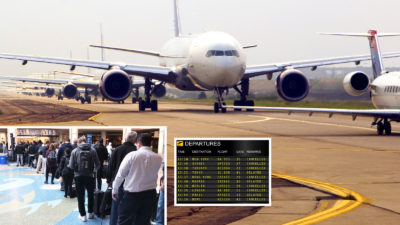Call for help
May 2019
Q. A small plane has crash-landed on a remote tropical island. The plane’s emergency beacon and radio were shattered, and no one filed a flight plan. Luckily, a sailor among the passengers has a VHF radio with just enough power left for a mayday call. The pilot tells him to make the call, but an engineer in the group yells, “Stop!” She explains that the weather forecast calls for calm winds and a strong temperature inversion tomorrow. What phenomenon does she hope to tap into?
ABOUT THE AEROPUZZLER
Draft a response of 250 words to this month’s question and email it to: aeropuzzler@aiaa.org for a chance to have it published in the May issue.
Do you have a puzzler to suggest? Email us at aeropuzzler@aiaa.org
FROM THE APRIL ISSUE
HOME RUNS AND WEATHER: We asked you what would be the best atmosphere for a home-run hitter: a 59-degree night in Phoenix in April (with the roof open) or a 97-degree day in Atlanta in June.
Barton Smith, professor of mechanical and aerospace engineering at Utah State University and self-described baseball missionary, picked this month’s top submission.
WINNING RESPONSE: You would rather bat on a 97-degree day in Atlanta in June for a few reasons. First, let’s think about what factors influence home run distance: local humidity, stadium elevation, temperature, wind and park dimensions. Higher humidity is a good thing for drag reduction, because water molecules are lighter than gases they displace, lowering air density. Elevation is similar, with higher elevations being equated to lower air densities. Higher temperatures are a good thing for flight, because the air molecules are expanded and, thus, less dense. Finally, park dimensions give the distance that a baseball needs to travel to get out. The first factor we can negate is elevation: Phoenix and Atlanta have negligibly different elevations, ~<30 feet [9 meters]. Next, the park dimensions of Chase Field (Arizona) and SunTrust Park (Georgia) are also roughly the same, within 5 feet [1.5 meters] on every outfield wall. This leaves humidity, temperature and wind. Arizona in April has 0% humidity compared to Georgia in June’s ~60% on average, giving Atlanta the advantage. The temperature is warmer on a Georgia day in June, giving Atlanta the advantage. And finally, wind is negligible in Chase Field but relevant in SunTrust Park. There is no way to know for sure whether the wind will help or hurt in Atlanta. Therefore, the Atlanta day in June, with its high humidity and temperature, will be the on-average better place to hit for distance, such as a home run.
Jacob Vendl
Bachelor of Science candidate in aerospace engineering, 2019
University of Colorado, Boulder
Jacob.Vendl@colorado.edu








